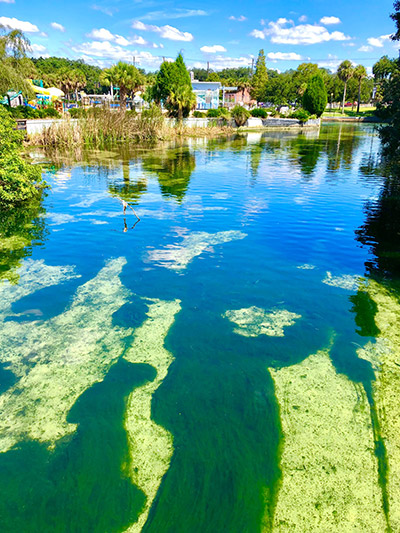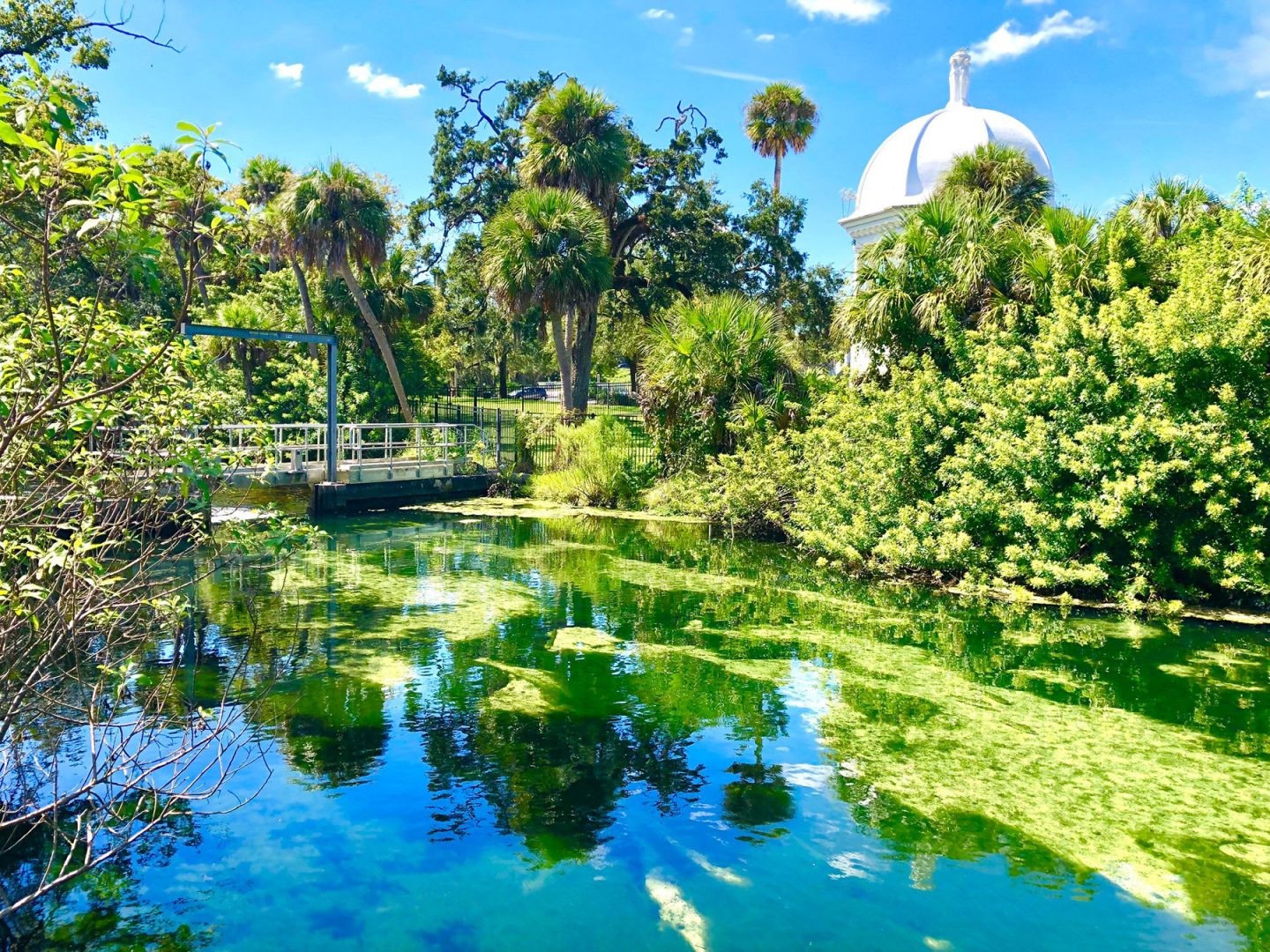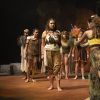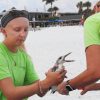The way Amanda Hagood, Ph.D., and Thomas Hallock, Ph.D., see it, one of the best ways to call attention to environmental issues such as climate change and water pollution is to wade in up to your knees, write a series of stories about what you find, and make those stories as accessible as possible.
That’s why Hagood and Hallock are working together on a series of observations and personal accounts focusing for now on two of the iconic creeks that wind their way through South St. Petersburg.
The Creekshed Project, a collaboration between Hagood, Eckerd College animal studies instructor, and Hallock, University of South Florida–St. Petersburg professor of English, literature and cultural studies, aims to shine a light on Booker and Salt creeks from their source to where they empty into Bayboro Harbor and Tampa Bay. Hallock calls the project “a storytelling expedition through the margins.”
For at least the next two years, the pair will continue to wade, kayak and otherwise navigate Booker and Salt creeks. Along the way, they will write about what they encounter, and tell the stories of the people who live along the waterways.
“We want to know when a creek becomes a culvert or ditch; the lost or misremembered histories behind active or buried springs; the relationship between water quality and social health; and the boundaries between built and natural environments—for even the smallest aquatic systems feeding Tampa Bay and the Gulf of Mexico,” Hallock says.

He began the project several years ago with his “City Wilds” column in Creative Loafing Tampa Bay, an alternative weekly newspaper based in Tampa. “We were looking to write in ways where people would find our work,” he says. Hagood, who has a Ph.D. in American literature, came on board in January 2021, and the two began sharing the column. “It’s a reflection on how the Tampa Bay area has grown and how our nature has changed,” Hagood says. USF Libraries is posting the stories written by Hallock, Hagood and others interested in the project on a Creekshed story map.
Booker Creek, which runs past Tropicana Field, has been a primary focus of Hallock’s work. “Is it a poster child for St. Petersburg?” he says. “Absolutely. It’s misunderstood, it’s culverted, it’s contested, it’s polluted, and it’s smack dab in the middle of our gnarly history of racial injustice. It checks all the boxes of a St. Petersburg creek.”
For her part, Hagood is focusing on the springs that feed the creeks. As a child, she visited Disney World. But what she remembers most was the side trip to Wakulla Springs, south of Tallahassee. “I’ve been interested in springs ever since,” she says. “We have a lot of springs in the Tampa Bay area; it’s just that many of them have been paved over or replumbed or trashed beyond the mark of usefulness.”
To try to change that requires looking at springs in a different light. “Amanda is subtly changing how we write and think about Florida springs,” Hallock says. “There’s often a simple story line that the springs were once pure and beautiful, but now they’re being ruined. We all agree on that. What Amanda is doing is reconnecting the human story with the natural. There’s some really original writing coming out of this.”
Such as this excerpt from a Creekshed column Hagood wrote last November:
As I pull into the parking lot of the Sulphur Springs Pool off Nebraska Avenue one warm morning in early fall, lured by the lore of this legendary spring, these opposing images swap back and forth in my mind. What happened to Sulphur Springs? And what does it reflect about our ongoing reckoning with Florida’s water resources?
I head through the entrance gate to the sprawling pool, a chlorinated facility supplied by city water, which replaced its spring-fed counterpart after high bacteria counts shuttered it in 1986. When I tell the attendant that I’d like to bypass the pool and get a look at the spring, her eyebrows raise. “You know you can’t swim in it, right?”
Hagood, who lives in Gulfport and also writes for the local Gabber newspaper, and Hallock, who lives in the Old Southeast section of St. Petersburg, met at a conference in Kansas. They describe themselves as environmental humanists and share a love of writing. Of Hallock’s aim, he says, “Write in ways people will find our work. … Come out with a good story.”
They have brought in family members and friends to help with the project, and plan to add students from both schools. “There’s a lot of potential for us to expand and bring our students in,” Hagood says.
Hallock agrees, adding, “We’re really trying to come together as institutions within one community.”













